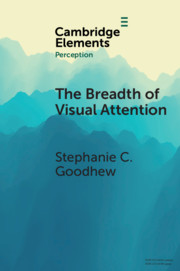Element contents
The Breadth of Visual Attention
Published online by Cambridge University Press: 25 May 2020
Summary
- Type
- Element
- Information
- Series: Elements in PerceptionOnline ISBN: 9781108854702Publisher: Cambridge University PressPrint publication: 18 June 2020
References
- 21
- Cited by



